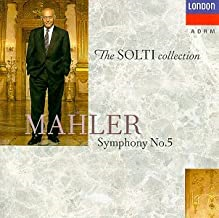As someone who regularly uses digital correction, they are more flexible than the analog implementation in general, and I personally like them. You can both implement near-exact copies of the analog filters and new types of filters not possible in analog.
There are 2 basic "best" digital filter forms to use for those uninitiated:
- "Minimum phase" filters - This is very similar to the way it happens in analog if using enough resolution. It delays the phase of the input based on the frequency, but takes only a tiny fixed amount of time to process. This is almost always the way "SW equalization" is implemented, and works a LOT like a HW equalizer, and sounds like them too. The exact form of the filter will determine how much phase delay you get on which frequencies. Humans are notoriously bad at detecting phase differences, so most people find this more than adequate.
- To be clear, all standard analog filters are some variation of this, and the digital processing is just reproducing those filters.
- "Linear phase" filter - This category of filter is something that you can basically only do digitally, and it produces a variable delay based on the filter configuration, but your output can then have frequency-specific level shifting with phase preserved or even "corrected" to some other phase profile in the more sophisticated variants. I.e. for any particular configuration, you get a fixed delay for the whole signal, but changing the configuration can change the delay.
- I have noted that using linear phase filters makes the "stereo image" seem a bit more natural/real with speakers (using a DEQX HDP-5 box for correction), but tonality-wise I can not tell any difference whatsoever. In headphones where the stereo image is already partially defeated then I'm not sure the advantage of linear phase filters will matter in a human-perceivable manner.
So, the analog OB correction, be it in the RI box, the various "ribbon headphone" amps, or in the OB correction line signal filters Raal has built recently, are the analog "phase delay" sort, and usually a simple version that ends up with say a 90 degree phase delay in the upper frequencies.
Having said the above, I have 3 sets of digital filters that I'm using on a DEQ2496 box, which has 31-band digital equalization built in using 96 Khz sampling rate using minimum-phase style EQ with 0.5 DB resolution. I.e. I can layer them and they just add together.
- OB correction:
- 315 -0.5
- 400 -0.5
- 500 -0.5
- 630 -1
- 800 -1.5
- 1000 -2
- 1250 -2
- 1600 -2.5
- 2000 -3
- 2500 -3
- 3150 -3.5
- 4000 -4
- ... -4
- Bass correction to match "typical headphone bass profile":
- 160 +1
- 125 +2
- 100 +3
- 80 +4
- 63 +5
- 50 +5.5
- 40 +6
- ... +6
- Compliance correction outside of bass zone to match "typical headphone profile":
With the standard RI box, I have been appling the 2 "correction to match typical headphone profile" items. After modding my RI box with a switch to allow removal of the analog OB compensation, adding in the OB compensation digitally as a decrease in response in upper frequencies matched my mod.
To be clear, any difference between doing the OB compensation in analog in the RI box or in digital in the DEQ2496 equalizer is so small (or human ears don't care) so I cannot detect it, and they sound literally the same to me. I like doing it all in the digital domain, so I tend to prefer that, but I'm sure that's just my bias.
Sometime soon(-ish) I'm probably going to set up an experiment to do the same filters as my DEQ2496 does but in linear phase, probably via using BruteFIR or similar on a text linux box. This way I could see if the linear phase vs minimum phase sounds identical to my ear or if there is some "naturalness" improvement. As mentioned above, I suspect the answer might be "maybe a bit" on the SR-1a due to the hybrid stereo image effects (i.e. partway between headphone and speaker kind of results), but that with the CA I suspect the results will be even more minor or not detectable, at least to me. We'll see.






























